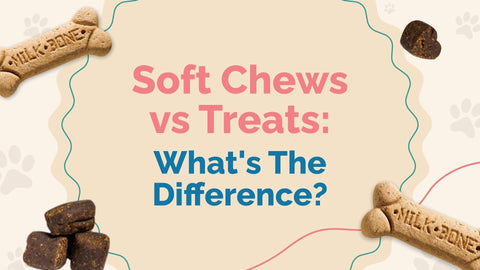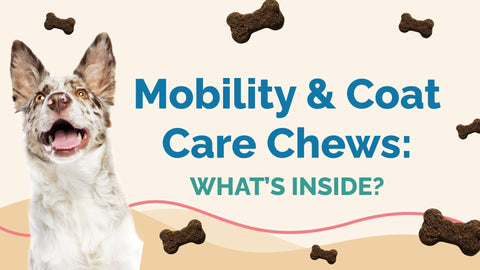

Hair loss in dogs is a symptom that may indicate various underlying issues, from hormonal imbalances to skin infections or even stress. While hair loss in humans is often considered an aesthetic concern, for dogs, it usually points to health issues that require immediate attention.
Understanding the root causes and symptoms can pave the way for effective diagnosis and treatment. This comprehensive article delves into the common causes, accompanying symptoms, and diagnostic procedures for hair loss in dogs.
What is Alopecia in Dogs?
Alopecia in dogs refers to hair loss that can be partial or complete, affecting specific areas or the entire body of the animal. It can result from a variety of factors including hormonal imbalances, skin infections, allergies, or parasites such as fleas and mites.
Alopecia itself is usually a symptom rather than a disease, indicating an underlying issue that may require medical attention. In some cases, it can also be caused by genetic factors or stress.
Diagnosis often involves a thorough veterinary examination, including skin tests and possibly blood tests, to determine the root cause and appropriate treatment.
Why Is My Dog Losing Hair? 6 Common Causes
- Allergies
- Parasites or Infection
- Hormonal Imbalance
- Stress and Behavior Issues
- Poor Nutrition
- Genetic Factors
Allergies
Allergies are a prevalent cause of hair loss in dogs. Your pet may be allergic to anything from food ingredients to environmental factors like pollen, dust, or flea bites. When dogs are allergic, they often scratch excessively, leading to hair loss. Moreover, these allergic reactions can cause skin inflammations and secondary bacterial or fungal infections, which exacerbate the problem.
Parasites and Infections
Mites, fleas, and ticks can cause significant discomfort and skin irritation, causing the dog to scratch or bite themselves, leading to hair loss. Conditions like mange, which is caused by mites, or fungal infections like ringworm, can cause localized or widespread hair loss, often accompanied by red and irritated skin.
Hormonal Imbalance
Endocrine diseases like hypothyroidism or Cushing's disease in Dogs are often accompanied by symptoms of hair loss. Hormonal imbalances affect various bodily functions, including the skin's ability to grow hair. These conditions often cause uneven hair loss and may include additional symptoms like lethargy and weight gain.
Stress and Behavioral Issues
Psychological factors can play a role in hair loss. Dogs undergoing stress from changing environments, such as moving to a new home or the arrival of a new pet, may exhibit signs of hair loss. Additionally, some dogs may have obsessive-compulsive behaviors that lead them to pull out their hair consciously, worsening the condition.
Poor Nutrition
An inadequate diet that lacks essential nutrients like fatty acids, protein, and vitamins can directly affect the quality of a dog's coat. Dogs that aren't getting balanced nutrition may suffer from dull coats that shed excessively.
Genetic Factors
Certain breeds are predisposed to conditions like alopecia, which can cause partial or complete hair loss. Genetic predisposition requires specialized treatment and may be irreversible in some cases.
Symptoms of Hair Loss in Dogs to Watch For
Patchy Hair Loss
Localized, patchy hair loss could indicate a variety of issues from parasites to allergies. These patches often appear suddenly and may be accompanied by other symptoms like redness or scaliness.
Overall Thinning
If you notice an overall thinning of your dog's coat, it could be due to more systemic issues like hormonal imbalances or nutritional deficiencies. Unlike patchy hair loss, this generalized thinning usually occurs gradually over time.
Scratching, Licking, or Biting
Excessive scratching, licking, or biting at the skin is not just a symptom but also a contributor to hair loss. This constant agitation often points to an underlying skin condition or irritation that should be addressed.
Secondary Symptoms
Symptoms like skin redness, inflammation, or even odorous discharge can accompany hair loss and offer clues to the underlying issue. Such secondary symptoms may require additional medical treatment for full recovery.
Proper Diagnosis for Hair Loss in Dogs
Veterinarian Consultation
The first and most crucial step in diagnosing the cause of hair loss in dogs is a comprehensive examination by a veterinarian. Your vet will likely ask questions about your dog's medical history, diet, recent changes in behavior, or environment to narrow down potential causes.
Skin Scrapings and Biopsy
To check for parasites or fungal infections, your vet may conduct skin scrapings, which are examined under a microscope. In some severe or persistent cases, a skin biopsy may be required for a more thorough analysis.
Blood Tests
Blood tests are often conducted to rule out hormonal imbalances and nutritional deficiencies. These tests can provide a lot of information about your dog's overall health and are invaluable in the diagnostic process.
Allergy Testing
If allergies are suspected, specific tests may be performed to identify the allergen responsible. This often involves either blood tests or intradermal skin tests, where small amounts of common allergens are injected into the skin to observe for reactions.
Conclusion
Hair loss in dogs can be distressing for both the pet and the owner. But understanding its root causes and associated symptoms can assist significantly in diagnosing and treating the condition effectively.
If you observe signs of hair loss in your dog, don't hesitate to consult your veterinarian for a comprehensive examination and targeted diagnosis. Early detection and appropriate treatment are vital for resolving the issue and enhancing your dog's overall health and quality of life.




